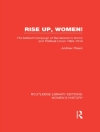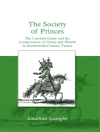IT was in 1299 that Osman declared himself Emir of the Turks, that is, of the tribe over which he ruled. The Seljuq Turks have been treated in a previous chapter; but there were many other Turkish tribes present in the middle and at the end of the thirteenth century in Asia Minor and Syria, and, in order to understand the conditions under which the Ottoman Turks advanced and became a nation, a short notice of the condition of Anatolia at that time is necessary. The country appeared indeed to be everywhere overrun with Turks. A constant stream of Turkish immigrants had commenced to flow from the south-west of Central Asia during the eleventh century, and continued during the twelfth and indeed long after the capture of Constantinople. Some of these went westward to the north of the Black Sea, while those with whom we are concerned entered Asia Minor through the lands between the Persian Gulf and the Black Sea. They were nomads, some travelling as horsemen, others on foot or with primitive ox-waggons. Though they seem to have left Persia in large bodies, yet, when they reached Anatolia, they separated into small isolated bands under chieftains. Once they had obtained passage through Georgia or Armenia or Persia into Asia Minor, they usually turned southwards, attracted by the fertile and populous plains of Mesopotamia, though they avoided Baghdad so long as that city was under a Caliph. Thence they spread through Syria into Cilicia, which was then largely occupied by Armenians under their own princes, and into Egypt itself. Several of these tribes crossed the Taurus, usually through the pass known as the Cilician Gates, and thereupon entered the great tableland, three thousand feet above sea-level, which had been largely occupied by the Seljaqs. By 1150, the Turks had spread over all Asia Minor and Syria. These early Turks were disturbed by the huge and well-organised hordes of mounted warriors and foot-soldiers under Jenghiz Khan, a Mongol belonging to the smallest of the four great divisions of the Tartar race, but whose followers were mainly Turks. The ruin of the Seljuqs of Rum may be said to date from the great Mongol invasion in 1242, in which Armenia was conquered and Erzerum occupied. The invading chief exercised the privilege of the conqueror, and gave the Seljuq throne of Rum to the younger brother of the Sultan instead of to the elder. The Emperor in Constantinople supported the latter, and fierce war was waged between the two brothers. A resident, somewhat after the Indian analogy, was appointed by the Khan of the Mongols to the court of the younger brother. The war contributed to the weakening of the Seljuqs, and facilitated the encroachment of the nomad Turkish bands, who owned no master, upon their territory. The Latin occupation of Constantinople (1204-1261) had the same effect, for the Latin freebooters showed absolutely no power of dealing with the Turks, their energies being engaged simply in making themselves secure in the capital and a portion of its European territory. Hulagu, the grandson of Jenghiz Khan, captured Baghdad in 1258 and destroyed the Empire of the Caliphs. He extended his rule over Mesopotamia and North Syria to the Mediterranean. The dispersion of the new Turkish hordes not only greatly increased the number of nomads in Asia Minor, but led to the establishment of additional independent Turkish tribes under their own rulers, or emirs, and to an amount of confusion and disorder in Asia Minor such as had not previously been seen under the Greek Empire…
Edwin Pears
The Ottoman Turks to the Fall of Constantinople [EPUB ebook]
The Ottoman Turks to the Fall of Constantinople [EPUB ebook]
¡Compre este libro electrónico y obtenga 1 más GRATIS!
Idioma Inglés ● Formato EPUB ● ISBN 9781531257286 ● Tamaño de archivo 0.6 MB ● Editorial Perennial Press ● Publicado 2018 ● Descargable 24 meses ● Divisa EUR ● ID 6174871 ● Protección de copia sin












